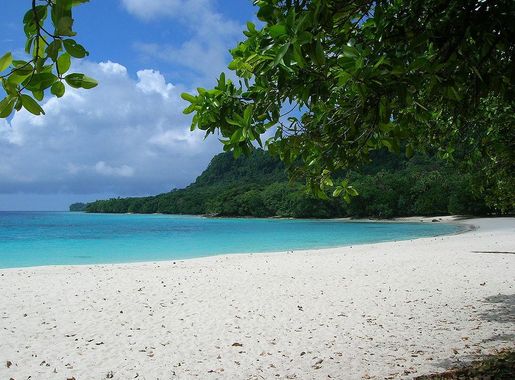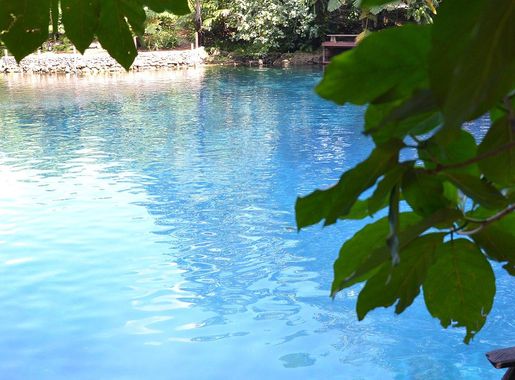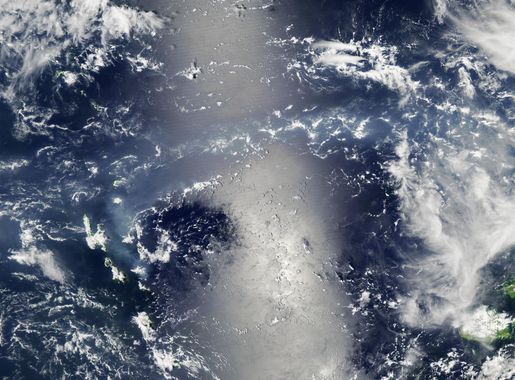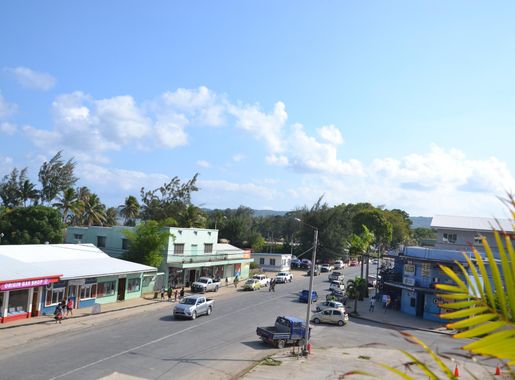
Santo: The Jewel of Vanuatu
Discover Santo in Vanuatu: Pristine beaches, adventurous dives, and rich culture await on this stunning island paradise.
Santo, also known as Espiritu Santo, is the largest island in Vanuatu. It offers stunning natural beauty, rich history, and vibrant culture. Imagine pristine white sandy beaches, crystal-clear blue waters, and lush tropical rainforests. Santo is a paradise for nature lovers and adventure seekers alike. The island is famous for its Blue Holes, which are natural freshwater springs surrounded by dense jungle. These spots are perfect for swimming, snorkeling, and diving. The famous Champagne Beach, with its soft white sand and turquoise waters, is one of the most beautiful beaches in the world. Santo also has a fascinating history. During World War II, it served as a base for Allied forces. You can explore the remnants of this period by visiting the Million Dollar Point, where military equipment was dumped into the sea. The SS President Coolidge, a sunken luxury liner turned troopship, is now one of the world’s best wreck dives. For those interested in culture, Santo offers a glimpse into traditional Melanesian life. You can visit local villages and experience customary dances, arts, and crafts. The island’s markets are brimming with fresh produce, local delicacies, and handmade souvenirs. Whether you are looking for relaxation or adventure, Santo has something to offer. Its natural wonders, historical sites, and cultural experiences make it a must-visit destination in Vanuatu.
Local tips in Santo
- Visit the Blue Holes early in the morning to avoid crowds and enjoy the serene beauty.
- Bring cash with you, as some local markets and smaller establishments may not accept credit cards.
- Respect local customs and traditions, especially when visiting villages. Dress modestly and always ask for permission before taking photos.
- Hire a local guide for diving and snorkeling to ensure safety and to learn more about the marine life and history.
- Try the local cuisine, especially lap lap and tuluk, for a unique culinary experience.
Santo: The Jewel of Vanuatu
Santo, also known as Espiritu Santo, is the largest island in Vanuatu. It offers stunning natural beauty, rich history, and vibrant culture. Imagine pristine white sandy beaches, crystal-clear blue waters, and lush tropical rainforests. Santo is a paradise for nature lovers and adventure seekers alike. The island is famous for its Blue Holes, which are natural freshwater springs surrounded by dense jungle. These spots are perfect for swimming, snorkeling, and diving. The famous Champagne Beach, with its soft white sand and turquoise waters, is one of the most beautiful beaches in the world. Santo also has a fascinating history. During World War II, it served as a base for Allied forces. You can explore the remnants of this period by visiting the Million Dollar Point, where military equipment was dumped into the sea. The SS President Coolidge, a sunken luxury liner turned troopship, is now one of the world’s best wreck dives. For those interested in culture, Santo offers a glimpse into traditional Melanesian life. You can visit local villages and experience customary dances, arts, and crafts. The island’s markets are brimming with fresh produce, local delicacies, and handmade souvenirs. Whether you are looking for relaxation or adventure, Santo has something to offer. Its natural wonders, historical sites, and cultural experiences make it a must-visit destination in Vanuatu.
When is the best time to go to Santo?
Iconic landmarks you can’t miss
The Havannah Vanuatu
Experience luxury and tranquility at The Havannah Vanuatu, a resort hotel that offers stunning ocean views, gourmet dining, and relaxing spa treatments.

Vanuatu National Museum
Explore Vanuatu's vibrant culture and heritage at the National Museum, showcasing fascinating artifacts and rich storytelling.
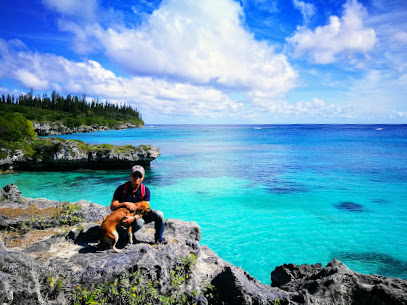
Nanda Blue Hole
Explore Nanda Blue Hole, a stunning natural attraction in Vanuatu, known for its vibrant waters and serene surroundings, perfect for swimming and snorkeling.
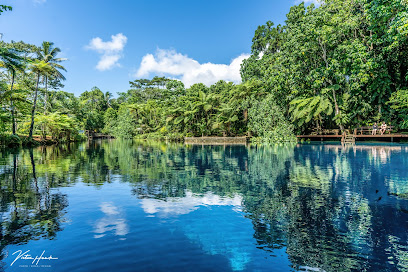
Turtle Bay Lodge, Restaurant and PADI Dive Centre
Experience the beauty of Vanuatu at Turtle Bay Lodge, where adventure meets relaxation in a stunning tropical paradise.

Aore Island Resort
Experience the breathtaking beauty and adventure of Aore Island Resort in Vanuatu, where relaxation meets vibrant marine life and stunning landscapes.

Matevulu Blue Hole
Experience the breathtaking beauty of Matevulu Blue Hole, a stunning natural wonder in Vanuatu perfect for swimming, snorkeling, and relaxation.
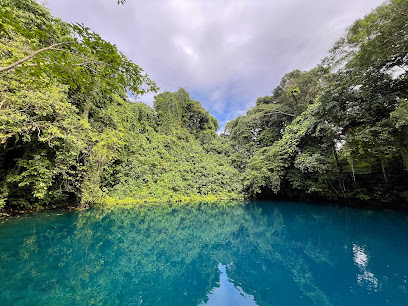
The Espiritu Hotel
Experience luxury and comfort at The Espiritu Hotel, the perfect base for exploring the stunning beauty of Espiritu Santo, Vanuatu.
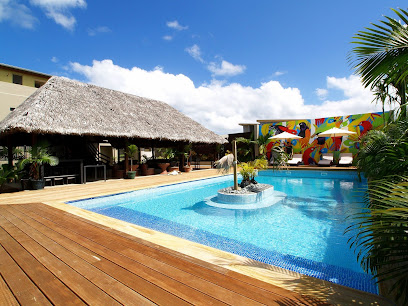
Naiwe Beach at Blue Water
Experience serenity at Naiwe Beach: a scenic escape on Efate Island, perfect for swimming, snorkeling, and soaking up the sun.
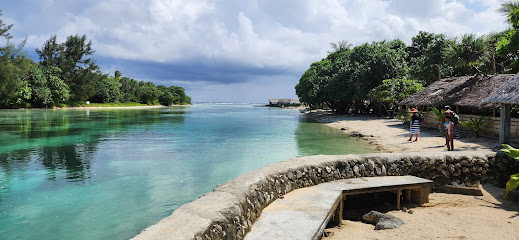
Barrier Beach Resort
Discover the enchanting Barrier Beach Resort in Luganville, Vanuatu - where luxury meets adventure amidst stunning natural beauty.

Million Dollar Point
Explore the underwater wonders and historical relics at Million Dollar Point in Luganville, Vanuatu, a captivating destination for adventure seekers.
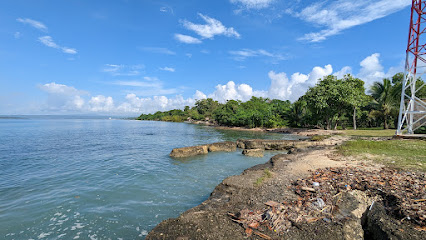
Riri Blue Hole
Experience the breathtaking beauty of Riri Blue Hole in Vanuatu, a serene oasis perfect for swimming, relaxation, and unforgettable natural wonders.
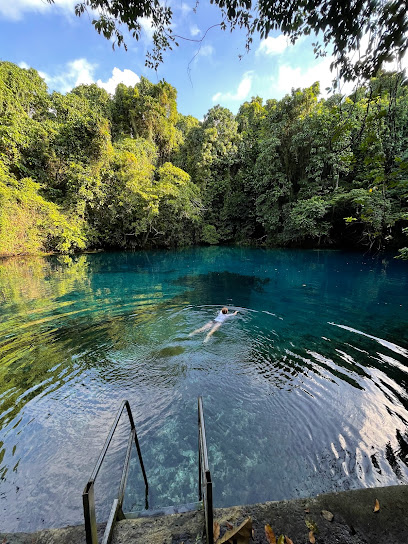
Espiritu Santo
Explore the breathtaking landscapes, rich culture, and pristine beaches of Espiritu Santo, Vanuatu's largest island paradise.
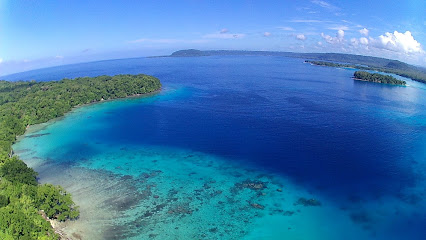
Chez Louis Restaurant
Experience the flavors of Vanuatu at Chez Louis Restaurant, a coastal dining treasure on Champagne Coast Road in Port Olry.
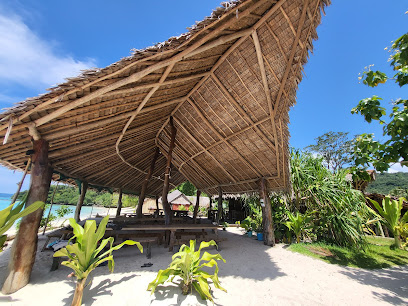
Deco Stop Lodge
Experience the perfect blend of comfort and adventure at Deco Stop Lodge, your ideal getaway in stunning Luganville, Santo Island.

Matevulu Lodge
Experience the serenity and beauty of Vanuatu at Matevulu Lodge, a tranquil retreat on the stunning Espiritu Santo coastline.
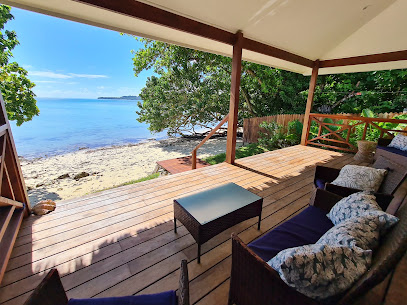
Unmissable attractions to see
Thar Secret Blue Hole
Explore the hidden gem of Thar Secret Blue Hole, a stunning natural swimming hole in Vanuatu's Champagne Coast, perfect for relaxation and adventure.
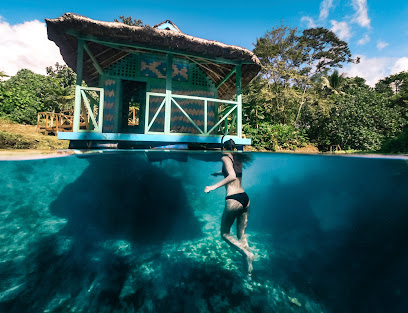
Nemo Bay Private Beach
Nemo Bay Private Beach: Your serene getaway in Vanuatu, where stunning views and tranquil waters await every traveler.
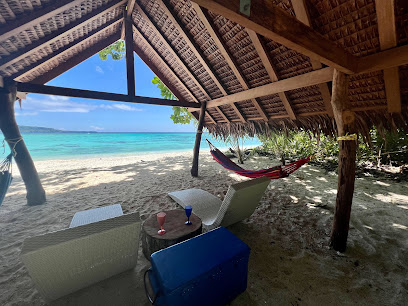
Loonè beach
Explore Loonè Beach: A Tropical Haven of Natural Beauty and Adventure in Vanuatu's Duin Dui.
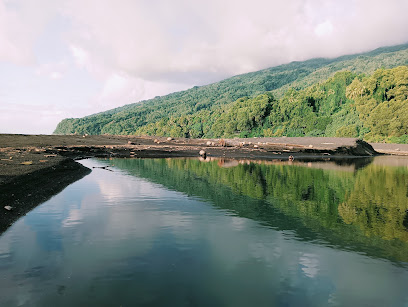
Trou de bleu de Hala.
Explore the serene escape of Trou de Bleu de Hala, a hidden gem in Hog Harbour with stunning landscapes and peaceful ambiance.

Show Ground Community Stage
Discover thrill and local culture at Show Ground Community Stage, the premier amusement park in Vanuatu for unforgettable family fun and entertainment.
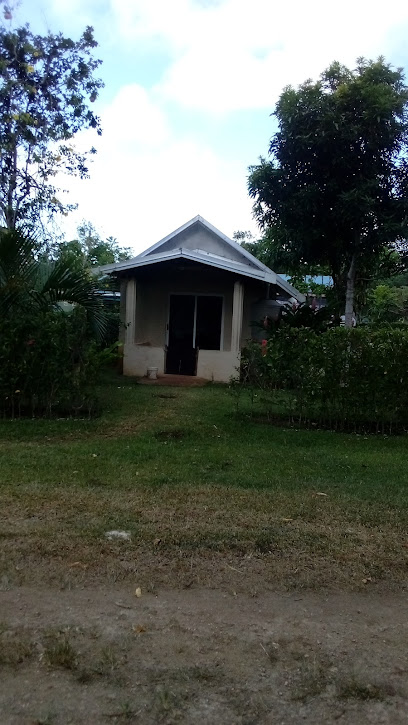
Essential places to dine
The Beach Bar
Experience unforgettable family moments at The Beach Bar - where delicious cuisine meets breathtaking ocean views in Mele.
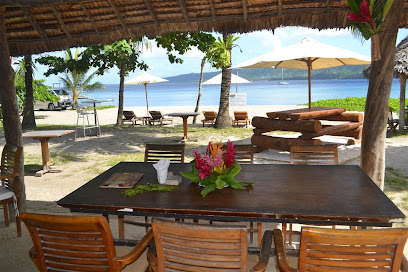
The Stonegrill Restaurant
Experience unique volcanic stone cooking at The Stonegrill Restaurant in Port Vila – where flavor meets stunning ocean views.
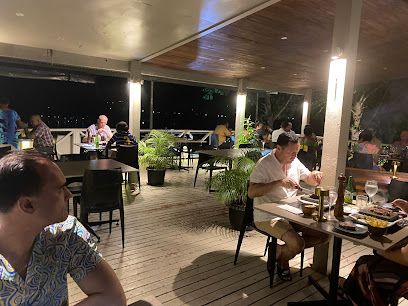
Rossi's
Experience culinary bliss at Rossi's in Port Vila - where delicious food meets aromatic coffee in a warm atmosphere.
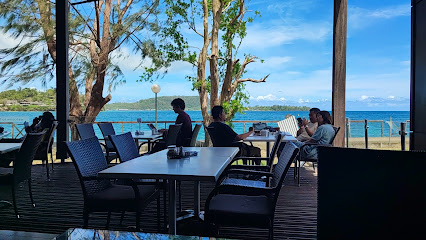
Reefers Restaurant & Rum Bar
Experience authentic South Pacific cuisine at Reefers Restaurant & Rum Bar in Port Vila – where every dish tells a story.
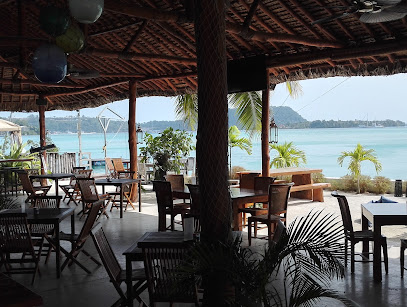
L'Houstalet Restaurant
Experience exquisite French cuisine infused with local flavors at L'Houstalet Restaurant in Port Vila - a culinary delight not to be missed.
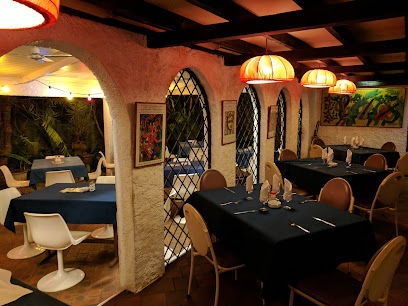
Turtle Bay Lodge, Restaurant and PADI Dive Centre
Experience coastal bliss at Turtle Bay Lodge with exquisite dining, thrilling diving adventures, and breathtaking views in Vanuatu.

Cafe Vila
Discover Café Vila in Port Vila – where stunning ocean views meet delightful culinary experiences in a tropical paradise.
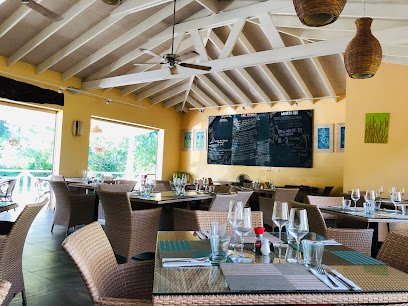
Kesorn‘s Exotic Thai Restaurant
Experience authentic Thai cuisine at Kesorn's Exotic Thai Restaurant in Port Vila – where every dish tells a story of flavor.
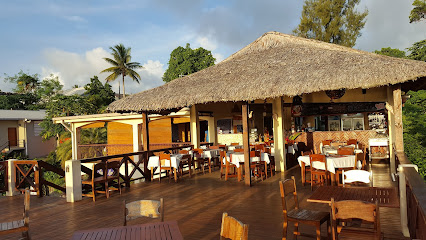
Pizza Hot AU Faré
Discover mouthwatering pizzas crafted from fresh local ingredients at Pizza Hot AU Faré in Port Vila - a must-visit dining destination.
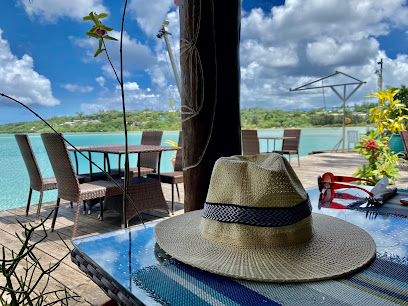
Pad Thai Port Vila
Experience authentic Thai flavors at Pad Thai Port Vila – where culinary delight meets stunning ocean views.
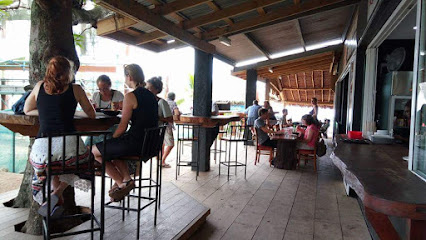
Paradise Cove Resort
Experience luxury and tranquility at Paradise Cove Resort in Port Vila Bay - where exceptional dining meets breathtaking tropical views.
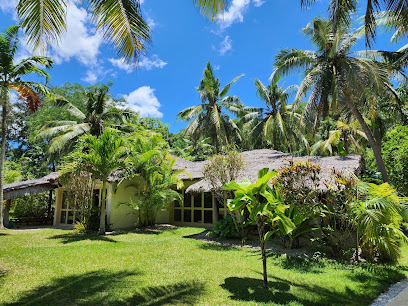
Three Pigs
Discover culinary excellence at Three Pigs in Port Vila, Vanuatu - where local flavors meet international cuisine amidst stunning tropical scenery.
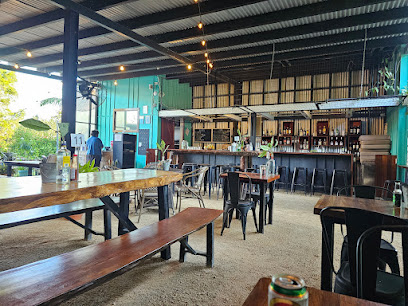
HARBOUR VIEW
Experience exquisite dining with breathtaking harbor views at Harbour View in Port Vila - a perfect blend of flavor and scenery.
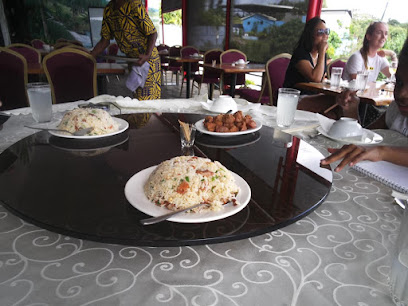
Chez Louis Restaurant
Experience the best of Vanuatu's cuisine at Chez Louis Restaurant in Port Olry - where local flavors meet breathtaking ocean views.
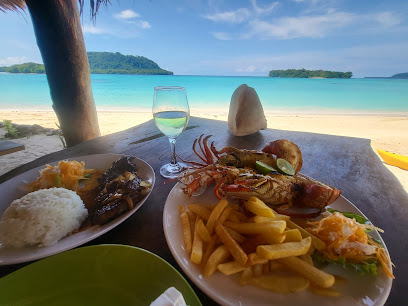
Chill Restaurant
Experience the vibrant flavors of Vanuatu at Chill Restaurant in Port Vila - where delicious cuisine meets stunning ocean views.
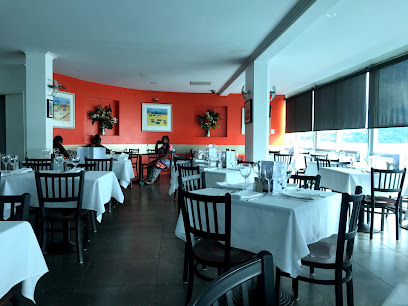
Markets, malls and hidden boutiques
LCM
Explore the vibrant flavors of Vanuatu at LCM, the premier grocery store in Luganville, offering local and international products for every taste.
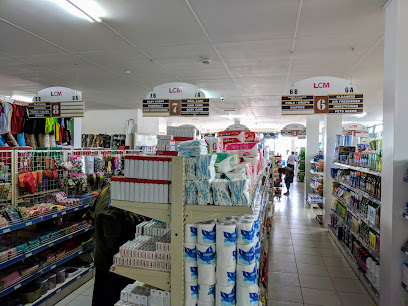
Santo Hardware
Explore Santo Hardware in Luganville for all your home goods needs, from tools to décor, ensuring a perfect finish for every project.
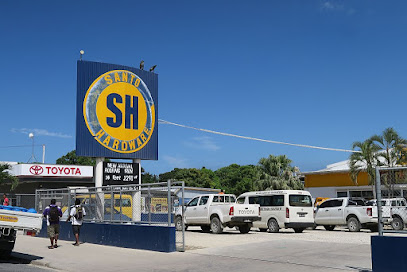
Lopo Store
Lopo Store in Luganville offers a delightful selection of local and international groceries, showcasing the rich culinary traditions of Vanuatu.
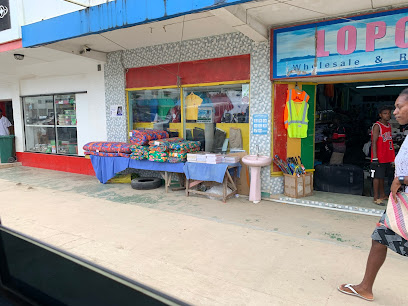
Daming Supermarket
Experience the vibrant flavors of Vanuatu at Daming Supermarket, your gateway to local produce and culinary delights in Luganville.

Op Shop
Explore the charm of Luganville at Op Shop, where unique home goods and affordable treasures await every tourist.
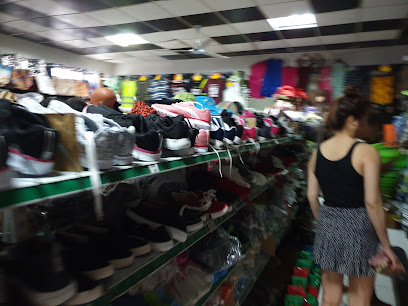
NEW LOOK
Explore the vibrant variety store NEW LOOK in Luganville for unique local products and memorable souvenirs that capture the essence of Vanuatu.
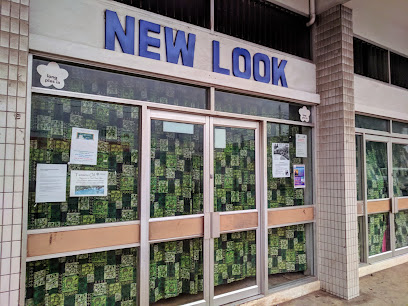
Daming Store
Discover the vibrant Daming Store in Luganville, a shopping paradise that offers local flavors, unique souvenirs, and a lively atmosphere for all visitors.
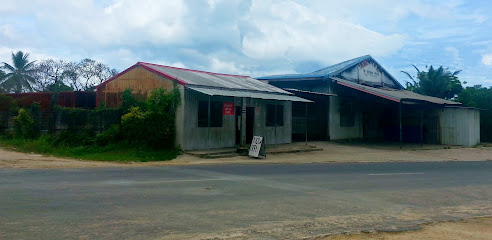
Bejomel Clothing
Discover sustainable fashion at Bejomel Clothing, a unique used clothing store in Luganville, Vanuatu, offering curated second-hand garments with a story.

Wong Sze Sing Store
Explore the authentic flavors and vibrant local culture at Wong Sze Sing Store in Luganville, a perfect stop for grocery shopping and local delicacies.

Michael Shao Store
Explore the rich local flavors at Michael Shao Store in Luganville, where fresh produce meets warm hospitality in a vibrant grocery shopping experience.
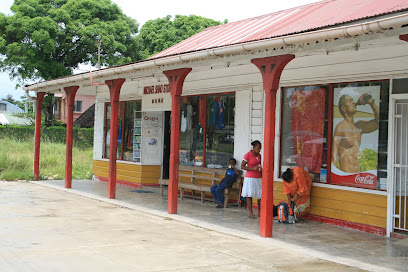
Hong store
Explore local crafts and authentic Vanuatu products at Hong Store in Tatafo, a must-visit destination for tourists.

New E - Teck Shop
Explore the best electronics and gadgets at New E - Teck Shop in Luganville, your premier destination for tech essentials in Vanuatu.

26 BACKYARD
Explore the vibrant local crafts and unique treasures at 26 Backyard in Luganville, a true reflection of Vanuatu's rich culture.

Punjas Supermarket
Discover the local flavors and vibrant culture at Punjas Supermarket, Luganville's favorite shopping destination for tourists and locals alike.

Millenium Community Store
Experience the heart of Luganville at Millenium Community Store, a vibrant shopping hub for local crafts, goods, and cultural immersion.

Essential bars & hidden hideouts
Chez Louis Restaurant
Discover the culinary treasures of Vanuatu at Chez Louis Restaurant, where ocean views meet exquisite local flavors in a welcoming atmosphere.
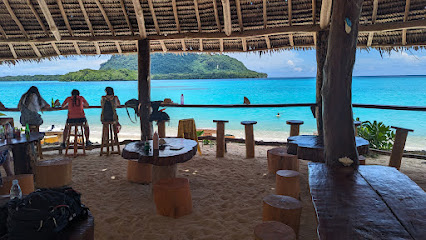
Champagne Beach Bar
Experience the ultimate beachside retreat at Champagne Beach Bar, where stunning views and refreshing cocktails await you in Hog Harbour.
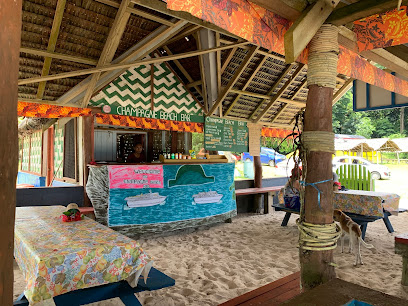
smugglers Seafood Restaurant & Bar
Discover the vibrant tastes of the ocean at Smugglers Seafood Restaurant & Bar in Luganville, where fresh seafood and local flavors await.
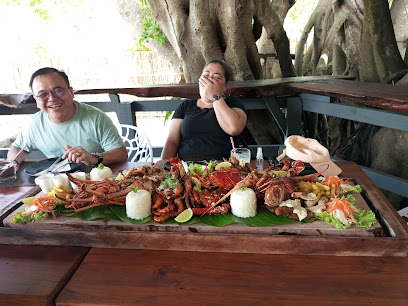
Meal Booths
Savor the authentic flavors of Luganville at Meal Booths, where local cuisine meets vibrant atmosphere for a unique dining adventure.
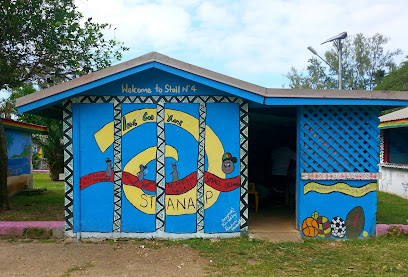
Deco Stop Restaurant
Experience the vibrant culinary culture of Vanuatu at Deco Stop Restaurant, where delicious flavors meet breathtaking views in Luganville.
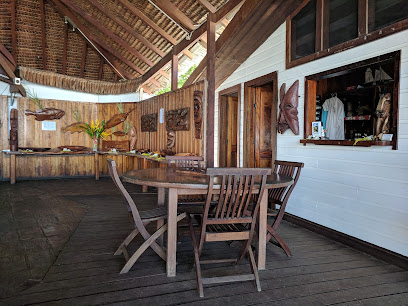
Mango Kava Bar
Experience the tropical charm of Mango Kava Bar in Luganville, where relaxation meets authentic Vanuatu culture and delightful kava drinks.
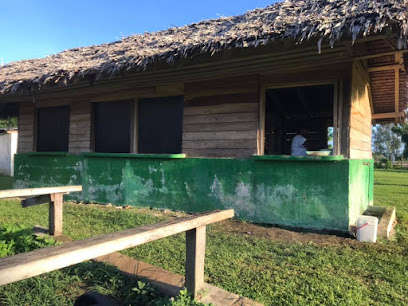
Rosie's in Luganville
Experience the vibrant flavors of Vanuatu at Rosie's in Luganville, where local cuisine meets warm hospitality in a delightful setting.
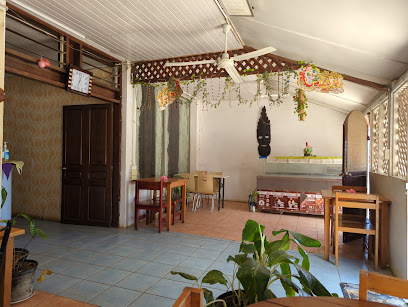
Red Corner Kava Bar
Discover the authentic taste of Vanuatu at Red Corner Kava Bar, where relaxation meets local culture in a vibrant setting.

Coconut Crab Sanctuary
Explore the Coconut Crab Sanctuary in Vanuatu, a vital conservation site where you can learn about the fascinating coconut crab and its natural habitat.
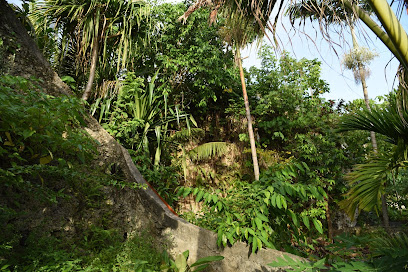
Totel Kava Bar
Discover the essence of Vanuatu at Totel Kava Bar, where local traditions meet vibrant flavors in a welcoming atmosphere.

Kenzie and the dad
Experience the culinary delights of Kenzie and the Dad in Griffin, where local flavors and warm hospitality come together for an unforgettable dining experience.

WW2 Million Dollar Point Bar & Cafe
Experience a unique blend of history and hospitality at WW2 Million Dollar Point Bar & Cafe in Luganville, Vanuatu.
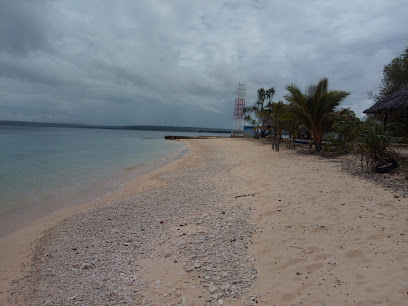
Temperere Kava bar
Discover the authentic taste of Vanuatu at Temperere Kava Bar, where tradition meets relaxation in a cozy setting.

Bamboo kava bar
Experience the serene ambiance of Bamboo Kava Bar in Luganville, where you can immerse yourself in Vanuatu's rich kava culture in a tropical paradise.
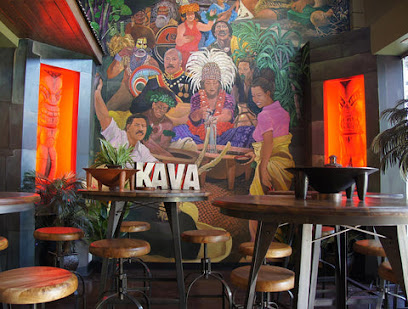
BLACK DIAMOND KAVA BAR
Discover the vibrant atmosphere of Black Diamond Kava Bar in Luganville, where you can enjoy traditional kava and immerse yourself in Vanuatu's unique culture.

Local Phrases about Santo
-
- HelloHalo
[ha-loh] - GoodbyeTata
[ta-ta] - YesIoe
[ee-oh-eh] - NoAe
[ay] - Please/You're welcomePlis
[plees] - Thank youTankiu
[tan-kyoo] - Excuse me/SorrySori
[soh-ree] - How are you?Yu stap gut?
[yoo stahp goot] - Fine. And you?Bae. Yu?
[byeh. yoo] - Do you speak English?Yu save toktok long Inglish?
[yoo sah-veh tohk-tohk long een-gleesh] - I don't understandMi no save
[mee noh sah-veh]
- HelloHalo
-
- I'd like to see the menu, pleaseMi wantem lukim menyu, plis
[mee wan-tehm loo-keem men-yoo, plees] - I don't eat meatMi no kakae mit
[mee noh ka-kai meet] - Cheers!Man yu!
[mahn yoo] - I would like to pay, pleaseMi wantem pei, plis
[mee wan-tehm pay, plees]
- I'd like to see the menu, pleaseMi wantem lukim menyu, plis
-
- Help!Tuwelkam!
[too-wel-kahm] - Go away!Go we!
[goh weh] - Call the Police!Kolem Polis!
[koh-lehm poh-lees] - Call a doctor!Kolem dokta!
[koh-lehm dohk-tah] - I'm lostMi las
[mee lahs] - I'm illMi sik
[mee seek]
- Help!Tuwelkam!
-
- I'd like to buy...Mi wantem bae...
[mee wan-tehm by...] - I'm just lookingMi jes lukim
[mee jess look-eem] - How much is it?Bae long hem?
[byeh long hem] - That's too expensiveHemia moa espensiv
[hem-yah moh-ah es-pen-seev] - Can you lower the price?Yu save lomaotem pres?
[yoo sah-veh loh-mah-oh-tem prees]
- I'd like to buy...Mi wantem bae...
-
- What time is it?Hemia taem nao?
[hem-yah tah-em now] - It's one o'clockHemia wan o'klok
[hem-yah wahn oh-klok] - Half past (10)Tufala haef (10)
[too-fah-lah hah-f (10)] - MorningMoning
[moh-neeng] - AfternoonApinun
[ah-pee-noon] - EveningIfening
[ee-feh-neeng] - YesterdayDei las
[day lahs] - TodayDei nao
[day now] - TomorrowDei bihaen
[day bee-haen] - 1Wan
[wahn] - 2Tu
[too] - 3Tri
[tree] - 4Fo
[foh] - 5Faev
[fah-ev] - 6Sikis
[see-kees] - 7Seven
[seh-ven] - 8Eit
[ayt] - 9Nain
[nayn] - 10Ten
[tehn]
- What time is it?Hemia taem nao?
-
- Where's a/the...?Wea hemi...?
[weh-ah hem-ee] - What's the address?Hemia adres ia?
[hem-yah ah-drehs ee-ah] - Can you show me (on the map)?Yu save soem slip (long map)?
[yoo sah-veh sohm sleep (long map)] - When's the next (bus)?Hemia taem next (bas)?
[hem-yah tah-em nekst (buhss)] - A ticket (to ....)Wan tiket (long ....)
[wahn tee-keht (long)]
- Where's a/the...?Wea hemi...?
History of Santo
-
The island of Santo, also known as Espiritu Santo, has a rich history that dates back thousands of years. The original inhabitants were the Melanesian people, who settled here around 3,000 years ago. These early settlers were skilled navigators and fishermen, living in small, self-sufficient communities. Their culture and traditions have been passed down through generations and remain an integral part of Santo's cultural fabric today.
-
The first recorded European to set eyes on Santo was the Portuguese explorer Pedro Fernandes de Queirós in 1606. Believing he had found the fabled southern continent, Queirós named the island 'La Austrialia del Espiritu Santo', which translates to 'The Southern Land of the Holy Spirit'. This name was later shortened to Espiritu Santo, which remains the island's official name.
-
In the 19th century, European missionaries arrived on Santo, bringing Christianity to the island. The missionaries had a significant impact on the local culture and way of life. They established schools, churches, and medical facilities, and many of the island's inhabitants converted to Christianity. The legacy of these missionaries is still evident in Santo's numerous churches and Christian communities.
-
During World War II, Santo played a crucial role as a military base for Allied forces. The island served as a strategic hub for operations in the Pacific theater. The American military presence brought significant changes to the island, including the construction of infrastructure such as roads, airfields, and hospitals. Million Dollar Point, where the Americans dumped surplus military equipment into the sea at the end of the war, remains a popular dive site and a poignant reminder of this period.
-
Vanuatu, including Santo, gained independence from joint British and French colonial rule in 1980. Since then, Santo has developed into a vibrant hub of culture and tourism. The island is known for its natural beauty, including lush rainforests, pristine beaches, and world-renowned dive sites like the SS President Coolidge wreck. The local economy has benefited from a growing tourism industry, while efforts to preserve and celebrate the island's rich history and cultural heritage continue.
Santo Essentials
-
Santo, also known as Espiritu Santo, is the largest island in Vanuatu. The main point of entry is Santo-Pekoa International Airport (SON) located near Luganville. There are direct flights from Port Vila, the capital of Vanuatu, operated by Air Vanuatu. International travelers can connect through Port Vila from major hubs like Brisbane, Sydney, and Auckland. Alternatively, you can arrive by sea as there are occasional cruise ships and cargo ships that dock in Luganville.
-
Transportation options in Santo include taxis, mini-buses, and rental cars. Taxis are available in Luganville and can be hired for short trips or full-day excursions. Mini-buses operate on fixed routes and are a cost-effective way to travel around the island. Renting a car gives you the flexibility to explore at your own pace, and several rental agencies are available in Luganville. For more remote areas, locals often use trucks or boats for transportation.
-
The official currency in Vanuatu is the Vanuatu Vatu (VUV). Credit cards are accepted in major hotels, restaurants, and some shops in Luganville, but smaller establishments and rural areas may only accept cash. ATMs are available in Luganville, but it's advisable to carry sufficient cash when traveling to more remote areas. Currency exchange services are available at the airport, banks, and some hotels.
-
Santo is generally a safe destination for tourists, but standard precautions should be taken. Avoid walking alone at night in unfamiliar areas and keep an eye on your belongings in crowded places. While there are no specific high-crime areas targeting tourists, it's always best to stay vigilant. Be cautious when swimming or snorkeling as currents can be strong, and always follow local advice.
-
In case of emergency, dial 112 for immediate assistance. The main hospital in Luganville is Northern Provincial Hospital, which can handle most medical emergencies. Pharmacies are available in Luganville for over-the-counter medications. It is strongly recommended to have travel insurance that covers medical emergencies and evacuation. For minor health issues, local clinics can provide basic care.
-
Fashion: Do dress modestly, especially when visiting villages and religious sites. Avoid wearing revealing clothing. Religion: Do respect local customs and traditions. Always ask for permission before taking photos of people or sacred sites. Public Transport: Do be patient and polite. Mini-buses may wait until they are full before departing. Greetings: Do greet people with a smile and a handshake. A friendly 'Halo' (hello) goes a long way. Eating & Drinking: Do try local dishes like laplap and seafood. Don't refuse food or drink offered by locals as it is considered impolite.
-
To experience Santo like a local, visit the Luganville Market where you can buy fresh produce and local crafts. Engage with locals; they are friendly and often willing to share stories about their culture and history. Don't miss the opportunity to explore the island's natural beauty, including the Blue Holes, Champagne Beach, and the Millennium Cave. For a unique experience, take a boat trip to the nearby islands of Aore or Malo.
Trending Landmarks in Santo
-
The Havannah Vanuatu
-
Vanuatu National Museum
-
Nanda Blue Hole
-
Turtle Bay Lodge, Restaurant and PADI Dive Centre
-
Aore Island Resort
-
Matevulu Blue Hole
-
The Espiritu Hotel
-
Naiwe Beach at Blue Water
-
Barrier Beach Resort
-
Million Dollar Point
-
Riri Blue Hole
-
Espiritu Santo
-
Chez Louis Restaurant
-
Deco Stop Lodge
-
Matevulu Lodge
Nearby Cities to Santo
-
Things To Do in Norsup
-
Things To Do in Lakatoro
-
Things To Do in Lamap
-
Things To Do in Sola
-
Things To Do in Port Vila
-
Things To Do in Lata
-
Things To Do in Lenakel
-
Things To Do in Isangel
-
Things To Do in Hienghène
-
Things To Do in Tadine
-
Things To Do in Bourail
-
Things To Do in La Foa
-
Things To Do in Nouméa
-
Things To Do in Auki
-
Things To Do in Honiara

